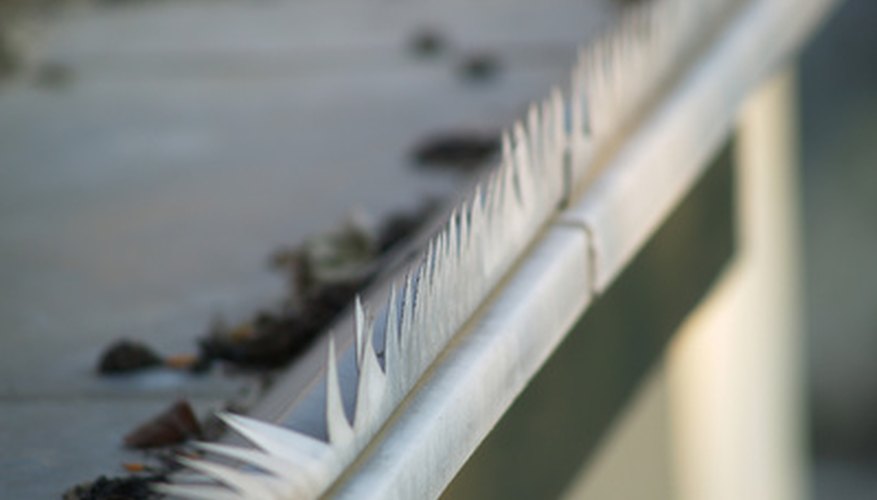PVC (polyvinyl chloride) guttering is an alternative to traditional metal guttering, which is designed to direct water away from a home's foundation. It is less expensive than metal guttering, more flexible and easy to install and maintain. However, there are disadvantages associated with PVC guttering as well as controversy concerning the use of PVC in building materials in general.
Durability
One disadvantage with PVC guttering is durability. Gutters must be able to stand up to the elements over the long term. Continuous exposure to sun, snow, rain and strong winds can cause gutters made from any material to buckle or separate from the brackets that secure them to the home. While PVC guttering does not rust or tarnish like metal, extreme temperatures can cause it to become brittle and develop cracks over time. In addition, some types of PVC guttering are made from thinner vinyl that may not hold up as well as guttering made from thicker vinyl.
- One disadvantage with PVC guttering is durability.
- While PVC guttering does not rust or tarnish like metal, extreme temperatures can cause it to become brittle and develop cracks over time.
Appearance
PVC guttering does not look like metal guttering and is available in a wider variety of shapes than traditional metal gutters. Homeowners with traditional homes may find that PVC guttering looks cheap or clashes with the style of their home.
Environmental and Health Concerns
Polyvinyl chloride is not biodegradable, making it difficult to dispose of. While PVC guttering in its finished form is nontoxic, the production of PVC involves exposure to hazardous chemicals that have been linked to cancer and it emits hydrogen chloride when burnt. In the case of a house fire, toxic chemicals are released, causing potential health problems such as irritation of the eyes, throat and lungs.
